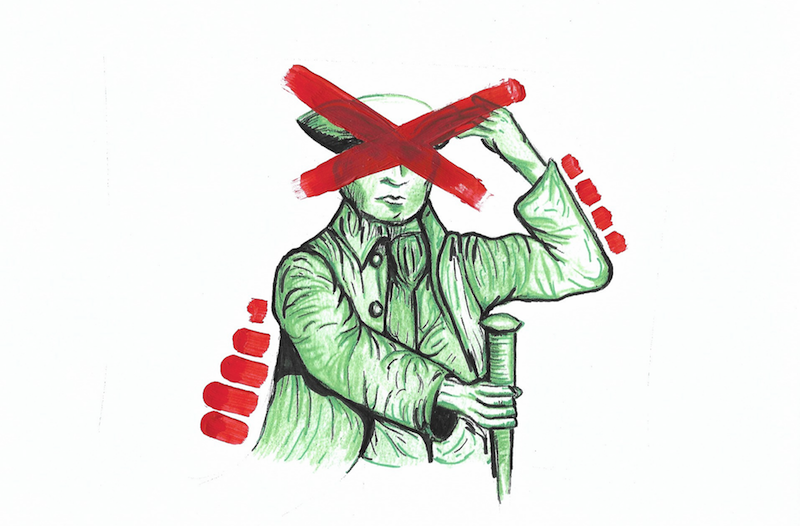Content warning: Mentions of graphic colonial violence
On March 23, Brigade de solidarité anticoloniale Delhi-Dublin, an anti-colonial group, vandalized the statue of Queen Victoria that sits in front of the Schulich School of Music. The Brigade de solidarité anticoloniale Delhi-Dublin spray-painted the statue green in the spirit of St. Patrick’s Day, and also vandalized the statue of James McGill, signalling their contempt for figures who represent imperialist and racist histories. While this case of ‘vandalism’ can be seen as a form of activism, it is perhaps not sufficient in rectifying the oppressive actions promoted by either Queen Victoria or James McGill.
The monument of Queen Victoria was first erected in front of Schulich in 1900. Her figure represents tragedy to the communities who were brutalized and oppressed by the actions of colonization she either spearheaded or promoted. Many marginalized students whose ancestors were directly affected by the actions of British colonialism have attended McGill since then, and they have to be constantly reminded of the colonial violence that Queen Victoria symbolizes.
In spray-painting the statue of Queen Victoria, Brigade de solidarité anticoloniale Delhi-Dublin is protesting all that these statues signify: The acceptance and celebration of colonial violence. However, vandalizing these statues has little real-world impact. While the green spray paint has symbolic value, it does not fully address the larger problems inherent to a culture that heralds figures like Queen Victoria. The green paint has been washed off, and the monument remains an imposing reminder of Canada’s colonial nature. The spray paint invites necessary conversation about the permanent removal of these monuments, but the simple erasure of the paint reflects how easily McGill has erased marginalized voices to avoid substantive and fruitful conversations.
Reconsidering which figures should be honoured with monuments is certainly not a new discourse in Canada. On Aug. 11, 2018, a statue of John A. Macdonald, Canada’s first Prime Minister, was taken down in Victoria, B.C., following demands from Indigenous communities. Macdonald played a significant role in encouraging residential schools as a site for aggressively assimilating Indigenous peoples. In Jan. 2018, Halifax’s city council voted to remove a statue of Edward Cornwallis, a former colonial governor of Nova Scotia, after activists spray painted the monument red. While colonizing the province, Cornwallis declared a ‘scalping proclamation,’ which rewarded anyone who killed a Mi’kmaq person and could present their scalps as evidence.
In covering the statue of Queen Victoria with green paint, Brigade de solidarité anticoloniale Delhi-Dublin likely aimed for results similar to those in Victoria and Halifax. However, the monument is still standing. Providing marginalized communities with a platform to uplift their voices is one way of actualizing substantial change. Another way of doing so would be to properly fund Indigenous studies education, and integrate Indigenous systems of knowledge into education. Another is to demand that this statue, if it is to remain, include a plaque detailing the harmful actions promoted by Queen Victoria on the monument.
McGill has an important role in respecting the needs of its marginalized communities. The spray-painting of the Queen Victoria monument should encourage necessary conversations regarding McGill’s racist history, especially as the founding father of the university, James McGill, was a slave owner. To ensure that these conversations produce positive outcomes, measures toward amplifying marginalized voices must be taken seriously.









